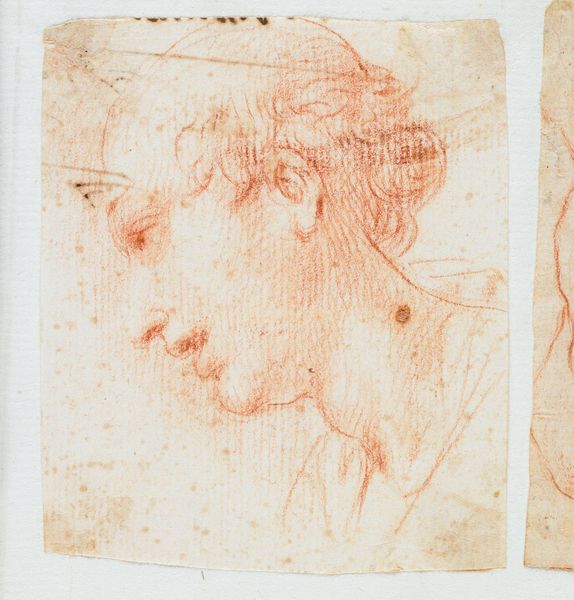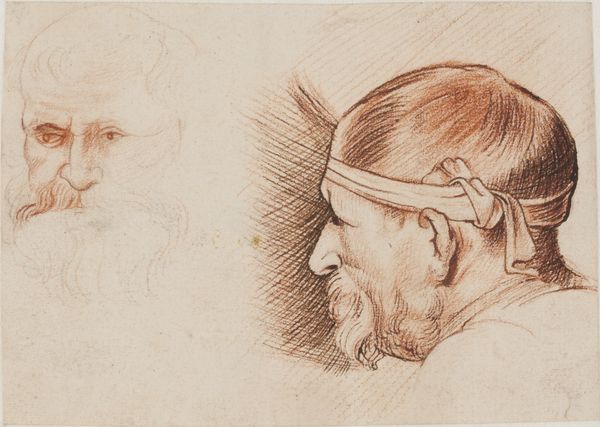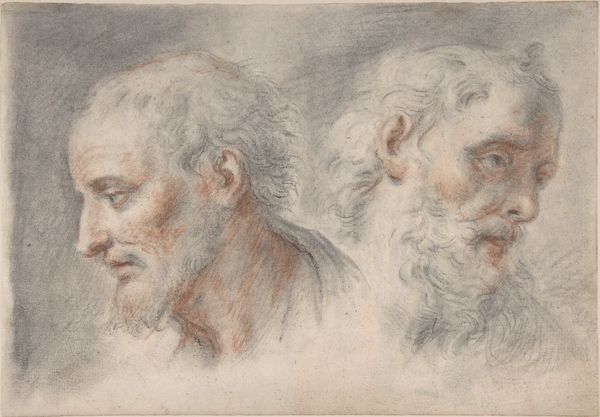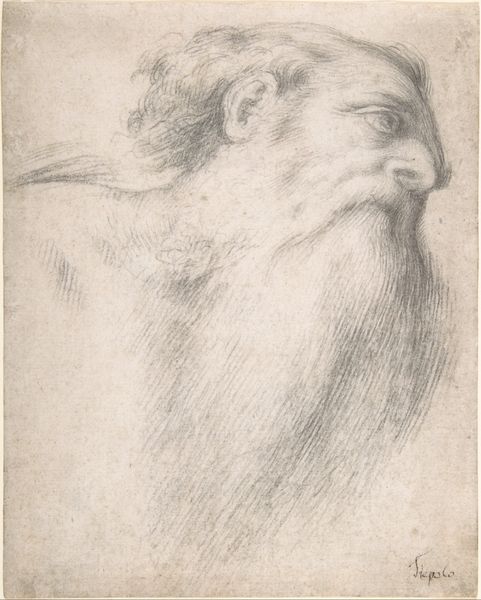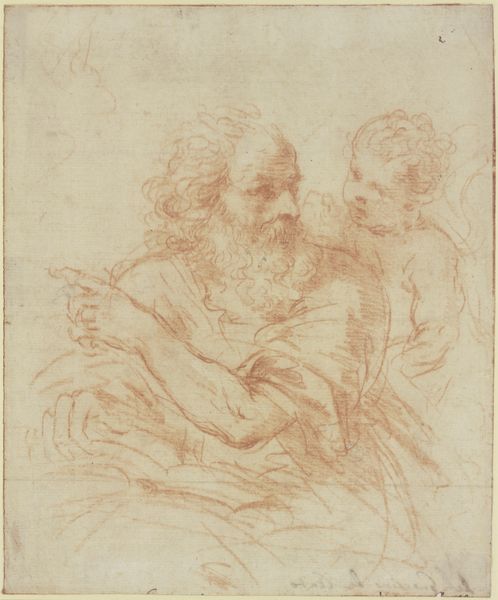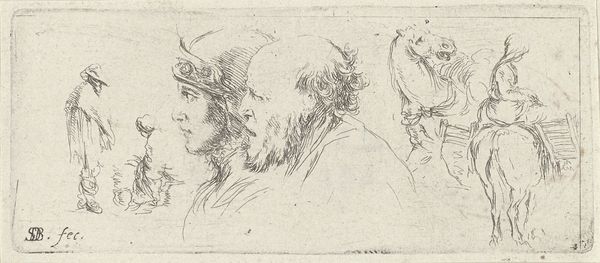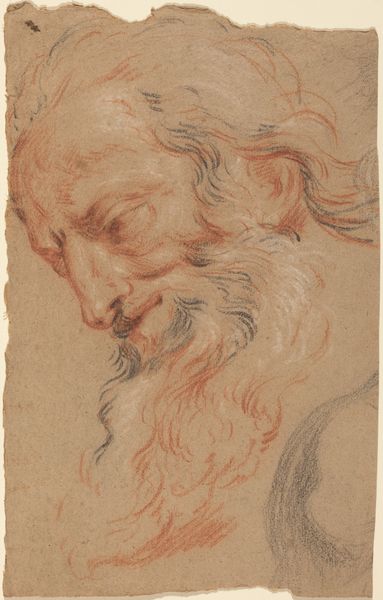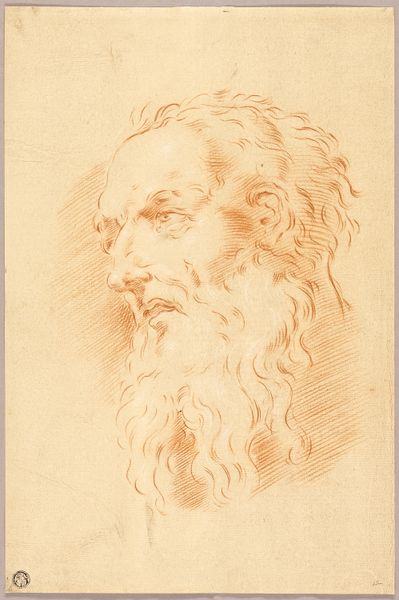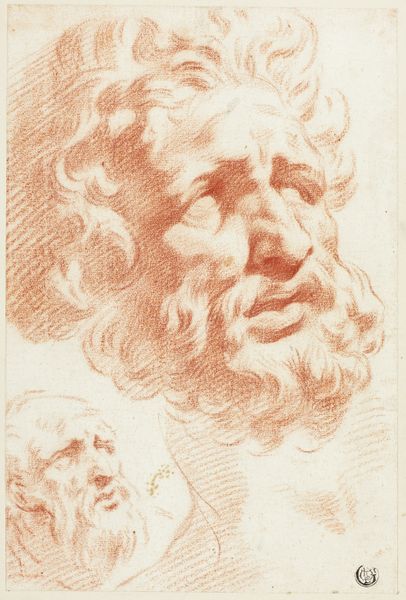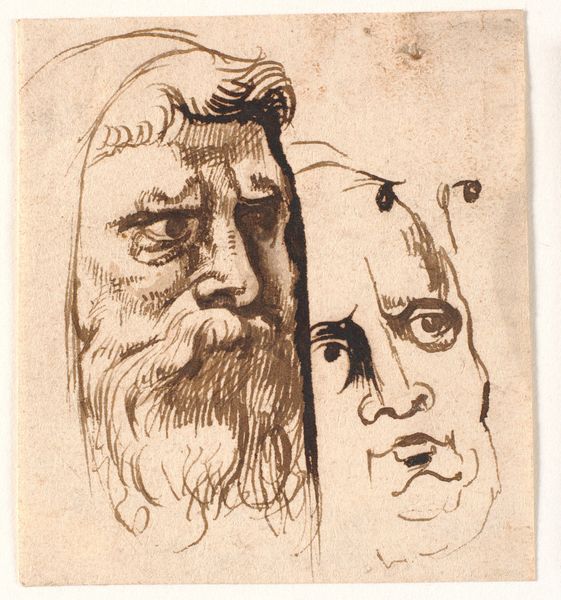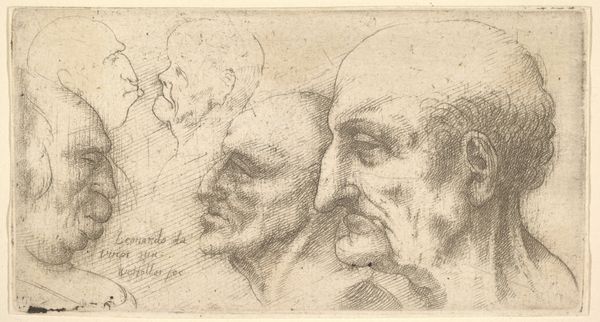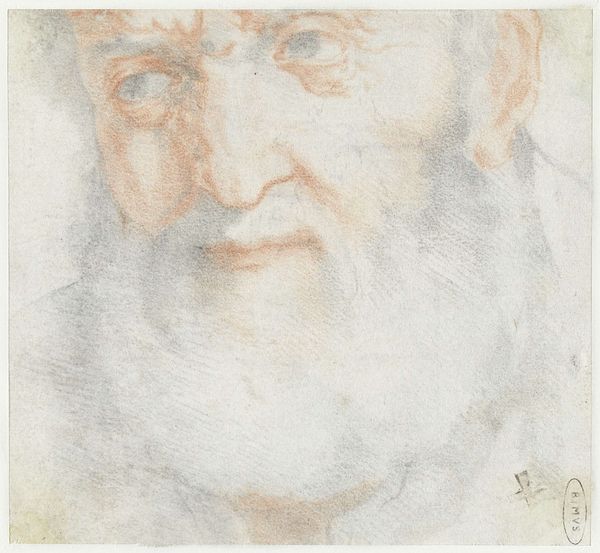
drawing, red-chalk
#
portrait
#
drawing
#
medieval
#
red-chalk
#
figuration
#
11_renaissance
Dimensions: 16 1/2 x 10 7/8 in. (41.91 x 27.62 cm) (mount)3 15/16 x 3 13/16 in. (10 x 9.68 cm) (c (H.84))
Copyright: Public Domain
Curator: Looking at this drawing from sometime in the 16th or 17th century—thought to be by Cesare Rossetti—my initial reaction is one of somberness. The man’s downcast gaze and the delicate rendering in red chalk create an atmosphere of introspection. Editor: Indeed. The medium is integral here. The red chalk, also known as sanguine, lends itself perfectly to capturing the warm tones of skin, enhancing the realism. Observe the expert handling of light and shadow. Note how it models the planes of the face, drawing attention to the receding hairline and the texture of the beard. Curator: It’s striking how Rossetti captures a moment of private reflection. I’m drawn to think about how artists were influenced by Renaissance humanism in portraiture. His downcast glance communicates so much about lived experience and mortality within its particular historical moment, specifically Renaissance culture’s changing views on aging, masculinity, and wisdom. Editor: You raise important points about its context. Focusing on its construction, however, I would stress the economical yet assured lines that build the figure. Notice, for example, the subtle variations in pressure used to depict the beard, suggesting depth and volume through purely graphic means. Also, his positioning allows us to fully appreciate Rossetti's attention to the structural nuances of the cranium itself. Curator: Absolutely. I read those "economical lines," as you call them, through the lens of class, religious reform, or political struggle. Each stroke carries the weight of a shifting world, inviting conversations about social justice through historical narratives of male vulnerability in Rossetti's period. The portrait becomes more than a depiction of one man; it represents an era marked by transition. Editor: Very compelling. Yet, looking solely at the graphic architecture, what do we learn? Rossetti’s technique is inherently economical; it speaks volumes about line as primary structure. I still see formal precision and considered artistry irrespective of biographical details or socio-historical frames. Curator: Both approaches enhance how we grasp art and how we use these visual languages. I love the thought of encouraging diverse understandings in interpreting this artwork's layered implications on aging and masculinity during periods of dramatic transformation! Editor: Quite. Allowing close-looking to expand in all these ways enhances our comprehension. Art is, if nothing else, generative; let's simply admire its ability to instigate further discourse.
Comments
minneapolisinstituteofart almost 2 years ago
⋮
This album page, with a group of chalk studies, was put together some time in the 17th century, most likely in Italy judging from the paper. It comes from a larger album that was broken up in the late 1970s and sold at auction. At this sale, four of the studies from this sheet had already been removed, where there are traces of pink adhesive. The album contained many drawings by the great Roman master, the Cavaliere d'Arpino, suggesting that the drawings were collected and brought together by one of Arpino's students. Here the study of the bearded man and the veiled young woman were accepted as autograph works of Arpino the art historian Herwarth Röttgen, one specialist of the artist. Another Arpino expert, Marco Bolzoni, instead recently attributed those two studies to Cesare Rossetti, a member of Arpino's shop.
Join the conversation
Join millions of artists and users on Artera today and experience the ultimate creative platform.
